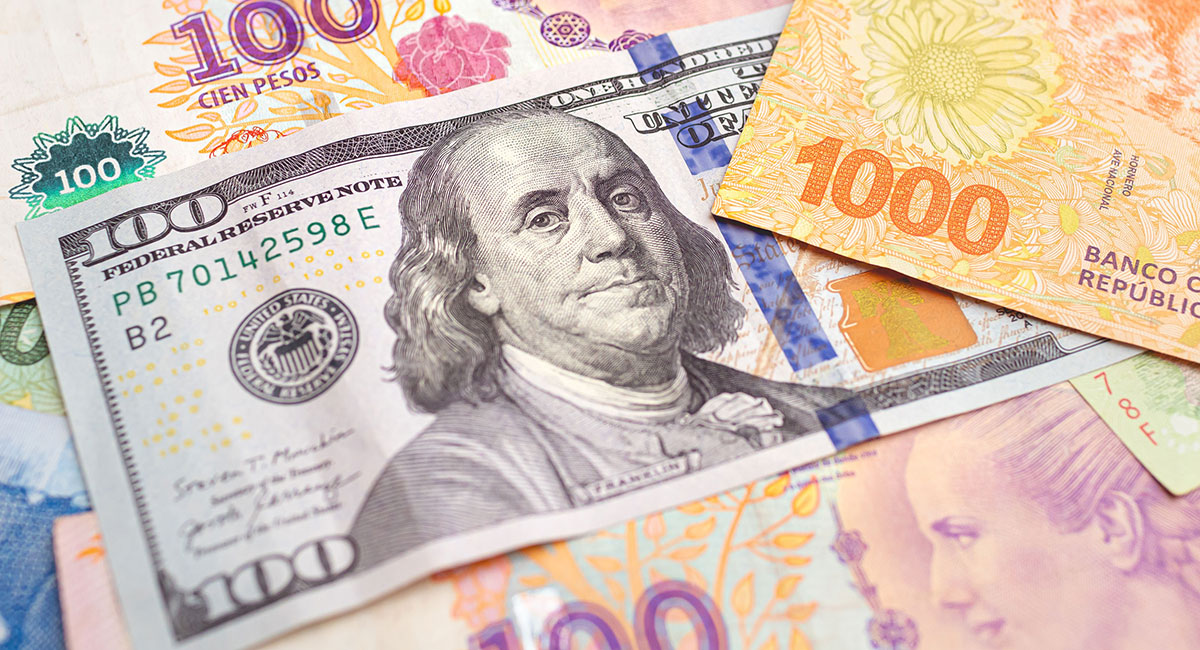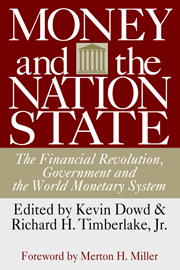Argentines gave up on their peso long ago. They now hold some $200 billion in cash, second only to the cash holdings of US citizens. With expectations for 186% inflation over the next 12 months adding insult to injury, it is little wonder that Argentines increasingly support presidential candidate Javier Milei, who has promised to dump the peso officially in favour of the US dollar. Once thought to be a longshot, Milei is now expected to garner the most votes in the October 22 general election.
Milei’s dollarisation proposal faces the time-worn critique of so-called‘experts’ who have spent their time counting dollars at the CentralBank of Argentina (BCRA.) When their count of dollars ($27.5 billionas of September) falls short of the liabilities of the central bank at thecurrent exchange rate ($79.7 billion), the experts conclude that“dollarisation can never work.” Unfortunately, the proposal then enters a death spiral as the experts’ erroneous assumption precipitates a cascade of insane countervailing policy proposals (further devaluations, trade interventions, capital controls, debt default) which make dollarisation seem nauseating by association.
If one can sidestep the red herring of assuming the liabilities of the central bank must be liquidated with foreign reserves, dollarization becomes a far more reasonable proposal. Bear two principles in mind: Money is first and foremost a unit of account, and most of the money supply is produced by the commercial banking system.
With dollarization, banks’ deposits, loans, assets, liabilities, and capital are all redenominated from pesos to dollars at the conversion rate, which, for purposes of illustration, we assume to be 350:1. At a stroke, Argentina’s firms and households will hold another $95 billion in dollar deposits, on top of the $17 billion they already have. Those who were obliged to pay principal and interest in pesos are now obliged to do so in dollars, and potentially at much lower rates. These new dollar-denominated debts are serviceable because local incomes are now earned in dollars. Banks will easily settle these dollar payments for goods, services, wages, and debt service among themselves because the redenominated stock of bank reserves lets interbank clearings work just as they did before. To the extent that the economy used bank money before dollarization, it can continue using bank money after dollarization. No liquidity from the BCRA is needed to achieve this conversion.
Apart from bank reserves, the other liabilities of the BCRA are peso cash ($15.1 billion) and a variety of short-term instruments where the BCRA holds short-term government debt on behalf of the banking system ($61 billion). There are more than enough reserves to redeem the peso cash. No further liquidity is needed to redenominate the claims on government debt.
After these operations, the central bank that remains is an entity holding dollar-denominated assets and dollar-denominated liabilities. The banking system faces no obstacles in expanding the money supply: Its lending activity now creates dollar deposits, which come out of circulation when dollar principal balances are amortized. However, if the volume of interbank payments expands along with the supply of bank money, increased demand for reserve money will increase short-term interest rates unless the supply of reserve money expands.
If Argentine banks are connected to the U.S. interbank market—as they are in Panama, for example—the problem is self-correcting. High short-term rates in Argentina provide a lending opportunity for US banks with excess reserves. Accordingly, an important post-dollarization role for the BCRA is to act as a conduit to the U.S. interbank settlement system as a kind of trusted central counterparty. The Federal Reserve needs only to assure itself of the BCRA’s creditworthiness, while it devolves upon the BCRA to monitor the creditworthiness of the banks to which it is connected domestically.
At the macro level, such flows between banking systems look like changes in the balance of payments. When U.S. banks lend reserves to Argentine banks, those banks give up a domestic claim for a foreign claim, which looks like a flow of investment into Argentina. The BCRA, standing in between the banking systems, receives a foreign reserve asset against which it issues domestic reserve money. Thus, changes in the monetary base correspond to changes in net foreign assets at the central bank, which in turn correspond to changes in the balance of payments. Flows of foreign reserves are not a problem to be solved in a dollarized regime; instead, they are the mechanical consequence of connecting two interbank markets.
With connected interbank markets, Argentine banks’ reserve demand is met by the monopoly supply of reserve money by the Fed. This is, at bottom, no different than what happens for banks in the United States. Thus, a dollarized Argentina ‘imports’ the interbank rate of the United States, which essentially entails importing the Fed’s monetary policy. The same connections to the supply of dollar reserve money enable two-way convertibility between reserves for dollar cash for Argentine banks and their clients.
Missing from this picture is the government, which now spends dollars, collects dollar taxes, and borrows in dollars to cover its deficits. Its situation is similar to a U.S. state or municipality because it lacks the ability to create money by fiat, even as its budget is cast into dollars. To the extent the banking system will lend to the government—that is, buy government debt—the supply of money can expand to support government spending. Otherwise, the government’s ability to spend is strictly limited by its ability to collect taxes, and the appetite of international capital markets to underwrite its deficit spending.
Dollarization in Argentina is not only feasible, but desirable. Even though the fiscal constraints imposed by dollarization might be a source of consternation for Argentina’s politicians, they are a small price to pay for the monetary stability that has eluded Argentina for the entire 21st century.











